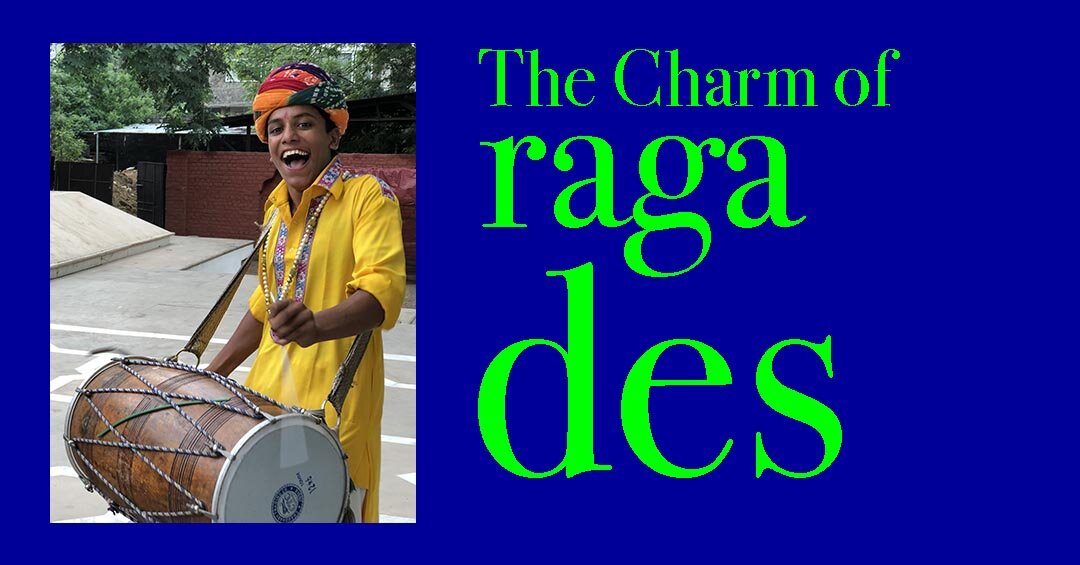Raga Samay Chakra
My father taught me how to recognize a raga. It was what you today describe as “hack”. It worked. It taught me the love for music – even though I did not learn the grammar of Indian Classical music had I learned from a music school or a maestro.
The Charm of Indian Classical Music
Classical Music from India is broadly divided into Hindustani Music and Carnatic. What I heard at home as I grew up was almost entirely Hindustani Classical with a limited exposure to a few composers of Western Classical. The radio was our chief source of music. There was of course an old turntable and a large collection of vinyl records that we all heard through the weekend. My father was a classical music buff and if he was home, the radio was on. He would occasionally pull out an old diary and scribble some notes after he heard a piece of music. “I maintain when I have heard what Raga and the name of the artiste”, he used to say. “The same raga sung by a different artiste will evoke a different feeling.”He had once explained the mystery of Ragas to me. The ragas sound best when they are sung at the time of the day they are designed for. The day is divided into twelve clusters (prahar) of approximately two hours each and the ragas assigned to these. There is a certain magic that you can experience when you listen to a Raga Bhatiyar or Raga Lalit if you hear it between 4am and 6am. Just try it out.
The Charm of Raga Des
Over one summer vacation I heard many of the ragas at the designated hour and must say I was not disappointed. Each one seemed to resonate a little more when I heard it at the designated hour… or maybe I just imagined it. That summer I fell in love with Hindustani Classical music. I always marveled at how Baba always seemed to know which raga was being played just by listening to some snatches of notes. I wanted to do the same. When asked how, he would always smile mysteriously and ruffle my hair. One day he said, “Learning about Ragas can take a lifetime. Enjoy the different notes of a raga and notice how the dominant notes define the mood. Notice the patterns. Let me introduce you to Raga Desh. The song Vande Mataram is based on Raga Desh. If you remember this song you will always be able to identify the Raga when you hear it. This song is played every morning on the radio. You know the song, don’t you? Now try to look for a song that sounds like Vande Mataram. If they sound like long lost twins then chances are that song is based on raga Desh.” Here is what it sounded like…https://youtu.be/N3CzWLzcebEArmed with that knowledge made it a mission in life to look for an audio twin of the national song. I kept trying to play the song in my mind over and over again so I would remember all the features I would need to identify the sibling. But none of the songs that I heard sounded the same. The year was 1971. My parents had gone to see the Hindi film Anubhav (Experience) and had gushed about its music director Kanu Roy, the brother of the singer Geeta Dutt. I did not understand anything of the movie. It was all about a husband and wife who were fighting with each other. And then it happened. The song Phir KahiN Koi Phool Khila (translation: Somewhere… once again a flower has bloomed) started to play.https://youtu.be/mgBdFGYwcCQI sat up and listened. Something was happening to my mind. The sound of Vande Mataram played in my head as if tugging my sleeve and pointing towards a face in the crowd. I screamed in delight much to the disgust of others around me. My parents were embarrassed. I whispered to my father, “Daddy! I found the twin of Vande Mataram. This song is the one.”
On the way back, he said, “You have made your first friend among the many Ragas. It is Desh. It sounds the best between 8pm and 10pm at night. That is what the great musicians will tell you. But you can also enjoy Desh just as much during the monsoons.” I waited patiently for the monsoons so that I could enjoy this new mood of Desh. Eventually that happened too. That evening in July the sky was dark with monsoon clouds. I ran to rummage through the vinyl records to look for Raga Desh. The streaks of lightning were writing mysterious messages in the sky. I stood in my courtyard waiting to feel the first drops of rain on my face before I would go and switch on the turntable. The drops fell and I ran back to turn on the music and shut off the lights to enjoy the new flavor of Desh. It was an evening I will never forget.
Vande Mataram also underwent a new interpretation with AR Rahman when India celebrated its 50th year of independence. It appealed to the youth and made it cool to feel patriotic. Watching the youth icon raise the Indian flag brought a lump to many a throat of even die hard cynics. I loved the video but missed the pristine version of Desh. Here is Rahman playing with Berklee College of Music. I love this one though.
Another example of Desh being used in a modern idiom is RD Burman’s composition Pyar Hua Chupke Se from the film 1942 A Love Story again a beautiful example of the romantic flavor of Desh. This film was also the last that RD Burman composed music for.
You can learn more about Raga Desh from this site of Rajan Parrikar
Listen to Ustad Rashid Khan sing Raga Des. Don’t miss this one
https://youtu.be/uWSXOFxECEY If you have been charmed by Raga Des, don’t miss The Charm of Raga Malgunji.




Leave a Reply to Jody Allen Cancel reply